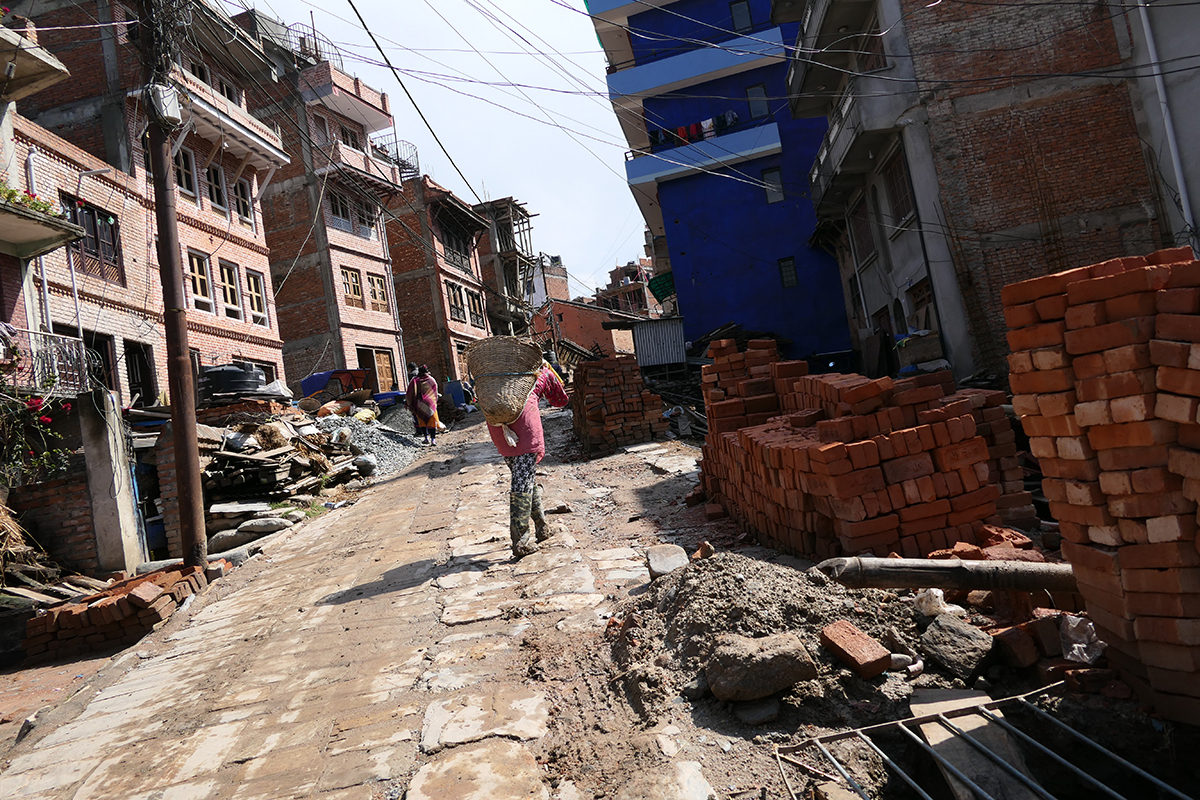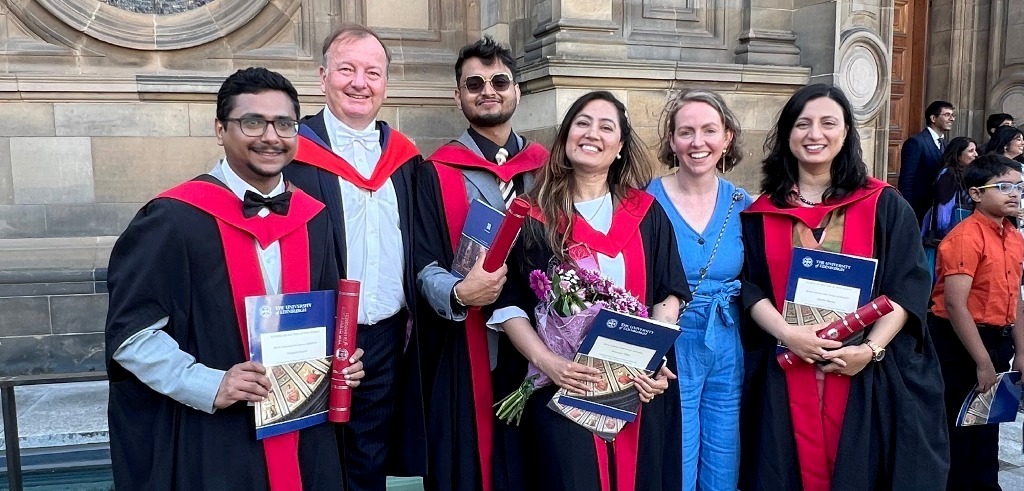
- Close
24/03/2021 | Global
Press release: Planning resilient cities to reduce risk of disasters

A UKRI GCRF research project has developed a new approach to planning resilient cities, which will minimise the risk of disasters like flooding, earthquakes and landslides for millions of people across the world. Climate change is destined to amplify these risks, making this work all the more urgent.
In an editorial in the International Journal for Disaster Risk Reduction, the Tomorrow’s Cities Hub outlined its vision of a new approach to risk informed planning, which explodes many of the traditional approaches to disaster risk and presents a pro-poor, multi-hazard and multi-disciplinary route to supporting urban planners in reducing risk in future development.
Prof John McCloskey of the University of Edinburgh, Principle Investigator of Tomorrow’s Cities and author of the study, said: “By 2050 cities in the developing world will absorb more than two billion new urban residents, representing 95% of global urban growth. Making this massive urban expansion safe from earthquakes, floods, landslides and fire is a global challenge but with the backing of substantial funding from UKRI Global Challenge Research Fund, and after two years work, we now set out an agenda to tackle this challenge from multiple directions simultaneously.
“At Tomorrow’s Cities we look at hazards together and in context: we think of governance as well as flooding, community perspectives as well as earthquake shaking; we focus on urban futures, rather than existing risk; we don’t just count the cost of damage but include impacts to wellbeing and economics, particularly of the poor who suffer most from disasters but are ignored in many existing risk assessments. Most importantly, we focus on people and decisions and the importance of evidence in making tomorrow’s cities safer.”
Traditional risk assessment focuses on attempts to manage current risk to existing infrastructure and almost exclusively considers asset value of impacted buildings, failing to reflect the lives of the most vulnerable people worldwide.
Dr. Carmine Galasso, Associate Professor of Engineering at UCL and first author of the study, said: “In this work, we reorient risk assessment to include the experience of the poor. We do not just consider asset loss but begin to think about risk in a more holistic way. When a bridge collapses, for example, the replacement cost is only the tip of the iceberg. Loss of connectivity disrupts work and community, degrading livelihoods and economic activity. A pro-poor understanding of risk must include these lived experiences, especially on the well-being of marginalised communities who are asset poor but who suffer disproportionately during disasters.”
Current approaches also generally focus on a single hazard, like an earthquake or a landslide, ignoring interactions between them, and choose the 100-year event because these control the statistics of asset loss. However, small or everyday risks often dominate the risk-experience of the poor who have their economic lives reset regularly by smaller floods or landslides, often the result of poor planning decisions outside their communities.
Mark Pelling, Tomorrow’s Cities Co-Director, King’s College London, said: “Rather than a single hazard view, we look at multi-hazard scenarios cover a wide range of scales, of course modelling the single high-magnitude events, but also including repeated small disruptions, connecting intensive risk to extensive or even every-day multi-hazards, and bridging the near-real-time priorities of the urban poor with longer-term strategic planning. Working on multiple hazards has shown how important it is to reduce human exposure and vulnerability. There are easy solutions like improving access to water for all or supporting the inclusion of women and youth in local decision-making that can reduce risk to many hazards – and with implications for how ready we are to cope with global threats like COVID-19 or climate change.”
Risk is not just physical but emerges from political and social systems into which inappropriate infrastructure exacerbates inevitable threats. Tomorrow’s Cities appreciates the complex roots of disaster risk and deploys an international team of social and physical scientists and engineers to address this complexity. But the key is in understanding the problem which can only come from real world experience. Co-production with practitioners is central to the Tomorrow’s Cities approach.
Tomorrow’s Cities is conducting research in four rapidly growing cities which experience significant hazards: Istanbul (Turkey), Kathmandu (Nepal), Nairobi (Kenya) and Quito (Ecuador). Kounkuey Design Initiative (KDI) is a Tomorrow’s Cities collaborator which works with residents of under-resourced communities in the Kibera, Mukuru and Mathare areas of Nairobi.
KDI Kenya’s Design Director, Jack Campbell-Clause, said: “There is a massive gap in the planning tools available to municipalities, planners, and engineers, to integrate risk information and community perspectives into an integrated and resilient infrastructure design. Tomorrow’s Cities holds that promise for the neighbourhoods where the majority of Naiorobian’s live, and could chart a pathway for many more cities in the region to create a risk-informed decision making space”.
Lucy Pearson, Head of Strategy and Development, Global Network of Civil Society Organisations for Disaster Reduction (GNDR), said: “As the world’s largest network of community groups working together to prevent hazards from becoming disasters, the Global Network of Civil Society organisations for Disaster Reduction jumped at the opportunity to be part of the Tomorrow’s Cities programme. Our grassroot members are clear: if urban development does not change, we will fail to achieve our Sustainable Development Goals and lives and livelihoods will continue to be lost to disasters. In a survey of 50,000 local people in urban areas, two thirds said that disaster risk is not currently taken into account in urban development planning. Tomorrow’s Cities provides a model for how academia, government, and civil society can collaborate to take local risk realities into account. It will provide practical insights into how development actors can make development safer. At GNDR our aim is that every time a hospital is built, a school curriculum is designed or land use plans are developed, communities are not put at more risk. The Tomorrow’s Cities programme will take vital steps towards that goal.”
Why is this important?
During the current global pandemic, we can sometimes forget the other problems faced by the world’s poor, but the immense, interconnected challenge of poverty, vulnerability to natural hazards, climate change, weak governance, rapid unregulated urbanisation, conflict and environmental degradation remain.
Already more than 2 billion people live with the threat of major natural disasters and urbanisation will concentrate these risks in the great urban centres of the future, principally in the developing world.
Current rapid urbanisation, without careful risk-conscious planning, is destined to repeat the mistakes of the past, to amplify current trajectories and condemn billions of the world’s poor to life in real and constant danger from natural disasters.
Tomorrow’s Cities has been working for two years now and has developed the tools, the partnerships and the interdisciplinary trust needed to start to produce impact in major development challenges.
Prof John McCloskey said: “In all previous projects I have been involved in, after two years of work we would have just built the partnerships but barely scratched the surface of a problem this size. Thanks to the GCRF belief that substantial funding for large groups innovating around intractable global challenges can produce change, we are now just shifting into high gear. We have a tried and tested international team including risk practitioners from national government, from local authorities and global agencies working together with community groups, scientists and engineers to really focus on a currently intractable planet-scale challenge. Most of all, the IJDRR editorial describes a vision shared across this diverse group in which we all understand our place and the contribution we need to make. This is not possible without the type of inspired funding that sets GCRF apart globally.”
For more information on this press release, please contact David Lyons, Communications Specialist: communication@tomorrowscities.org


